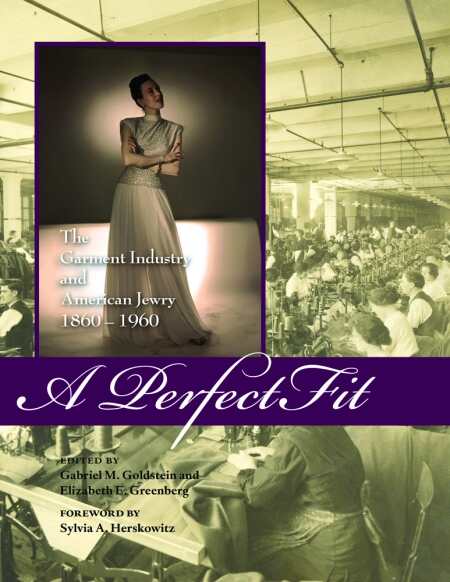A Perfect Fit
The Garment Industry and American Jewry 1860-1960
The thirteen essays in A Perfect Fit emphasize the connection between the culture and values of Jewish immigrants and their descendents and the growth of the garment industry in the US. This volume is an extension of the exhibition of the same name presented at Yeshiva University Museum during 2005-2006.
The essays bring together seventeen scholars from various areas of expertise. These include history, anthropology, business, economics, decorative arts, and design. In addition to the curators of the Yeshiva Museum project, independent researchers and faculty from a broad range of institutions are represented, including NYU, Berkeley, the University of Missouri, and the Écoles des Hautes Études en Sciences Sociales in Paris.
A Perfect Fit often tames the expansive scope of history by focusing on the experience of individual Jewish families. Well-known and prestigious companies like Brooks Brothers and Hart, Schaffner & Marks began as family businesses in the early 1800s. By focusing on the experience of one group or individual families, A Perfect Fit also offers a framework for investigating how other minorities have contributed to the changing mosaic of American life.
As a work of scholarship, A Perfect Fit reveals how one industry and its pioneers transformed the relationship between workers and management, shifted the focus of fashion from Europe to America, and brought quality garments “off the shelf” to consumers across the country. It also descibes how fashion continues to be a vital part of the US economy as well as a vehicle for other “newcomers” to enter the workforce. Presenting two narratives of American history—immigration and survival, and social and cultural transformation—the book offers surprising and entertaining footnotes to this history. For instance, the facts that fashionable hoop skirts of the 1850s freed women from the weight of four or five petticoats, and that Samuel Goldwyn, chiefly remembered for leading MGM, once worked as a glove maker in Gloversville, New York.
A Perfect Fit focuses on the positive outcomes of having a nascent industry grow under the influence of a group that shares the same language, culture, and experience. However, sharing these qualities does not guarantee that individuals share the same goals and ethics, as is assumed in the text. The development of unions is discussed as intertwined with the growth of the garment industry. However, the efforts of large manufacturers, especially in Rochester, New York, to stall unionization are presented in a noncritical light. Furthermore, the Triangle Shirtwaist fire of 1911 and the enormous issue of anti-Semitism are not deeply enough engaged.
Photos of the 320 objects from the Yeshiva exhibit serve as illustrations. Casual readers can survey these together with their captions and be educated and entertained. By delving further, they will be rewarded with a sweeping landscape of American history, revealed through a focused lens. Those readers with special interests in social and cultural history will find clear and detailed discussions. The extensive bibliography can serve as a source for further research for students at many levels. A Perfect Fit, as its title suggests, is indeed tailored to the needs of a range of readers.
Reviewed by
Geraldine Richards
Disclosure: This article is not an endorsement, but a review. The publisher of this book provided free copies of the book to have their book reviewed by a professional reviewer. No fee was paid by the publisher for this review. Foreword Reviews only recommends books that we love. Foreword Magazine, Inc. is disclosing this in accordance with the Federal Trade Commission’s 16 CFR, Part 255.

